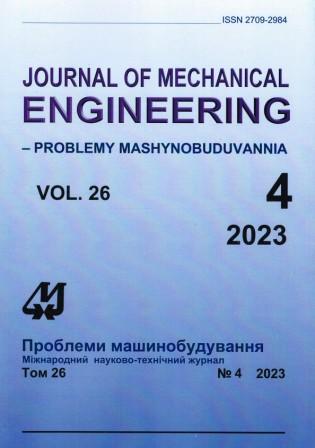Strength of Composite Transport and Launch Container for Rocket Launch
Abstract
A transport and launch container for launching rockets made of fiberglass is considered. The main goal of the paper is to calculate the stress state of this container and check the strength conditions. The calculation of the pressures of the combustion products is carried out for several positions of the rocket nozzle in the container. Two cases are considered for the nozzle, which is located: in the middle of the container and at the outlet of the container. The maximum values of the pressure acting on the inner side of the container are observed when the rocket nozzle exits the container. The pressure field is axisymmetric. In view of this, to approximate the pressure field, it is decomposed into a Fourier series along the longitudinal coordinate of the rocket. The stress state of the container is also axisymmetric. In addition, it is also considered for two cases of the nozzle and the container configuration. The finite element method implemented in the ANSYS software complex was used to calculate the stress state. The highest stress values are observed when the nozzle exits the container. As it follows from the finite element calculations, circumferential stresses are the greatest. The strength limit of fiberglass is used to analyze the strength of the container. As can be seen from the calculations, the container meets the strength requirements with a large margin factor.
Downloads
Published
Issue
Section
License
Copyright (c) 2024 К. В. Аврамов, В. М. Сіренко, В. В. Заверуха, С. І. Планковський, Є. В. Цегельник, В. В. Комбаров

This work is licensed under a Creative Commons Attribution-NoDerivatives 4.0 International License.
All authors agree with the following conditions:
- The authors reserve the right to claim authorship of their work and transfer to the journal the right of first publication of the work under the license agreement (the agreement).
- Authors have a right to conclude independently additional agreement on non-exclusive spreading the work in the form in which it was published by the jpurnal (for example, to place the work in institution repository or to publish as a part of a monograph), providing a link to the first publication of the work in this journal.
- Journal policy allows authors to place the manuscript in the Internet (for example, in the institution repository or on a personal web sites) both before its submission to the editorial board and during its editorial processing, as this ensures the productive scientific discussion and impact positively on the efficiency and dynamics of citation of published work (see The Effect of Open Access).

